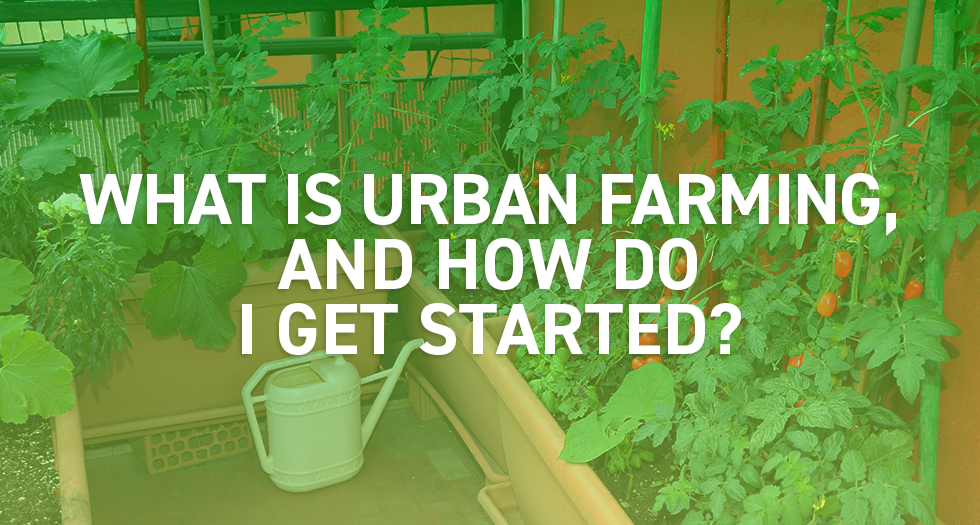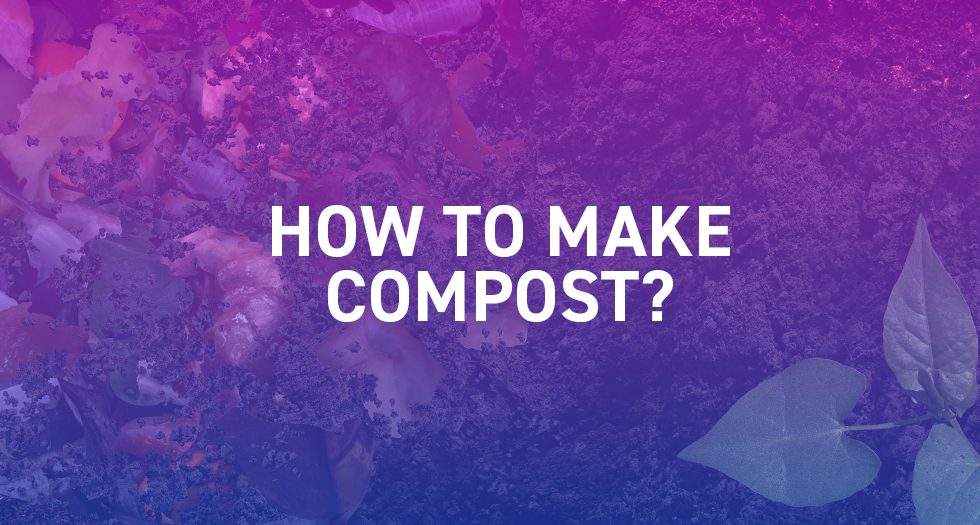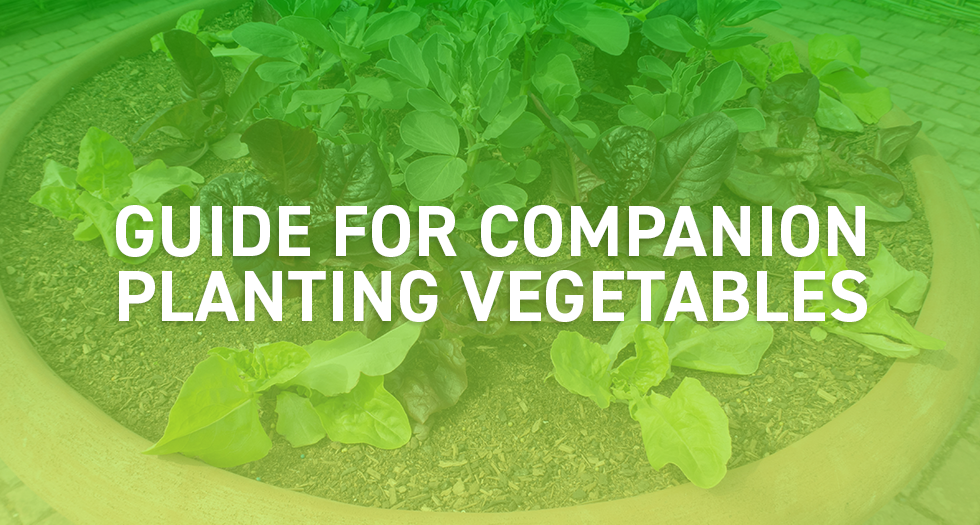Urban farming and agriculture are becoming increasingly popular as people look to find more ways to enhance food security while ensuring they are eating sustainably sourced, (and often organic) healthy fresh fruit and veg. As the name suggests, urban farming takes place in urbanised areas. With the right tools, equipment and enthusiasm, anyone can start to cultivate their own fresh food on a rooftop, balcony, in an allotment, garden, and even inside the home.
As well as providing access to fresh food, growing your own vegetables, fruit and herbs can help to reduce food waste and CO2 emissions, improve water quality and encourage biodiversity. It can also promote a healthier lifestyle in both mind and body.
Different Types of Urban Farm
The beauty of urban farming is that literally anyone can grow their own food at home and become an urban farmer. You don’t need to have loads of space as there are different methods of urban agriculture you can use to suit your environment.
Container gardening is a great way to grow fruit and veg on a patio, balcony or inside your house or flat. Vertical gardening is another excellent way to make use of limited space, as the plants are grown in set ups against walls or in shelving, making the perfect space saving solution.
Hydroponics, aquaponics and aeroponics are all soil-less systems and are ideal for cultivating plants in a smaller footprint, reducing the need for land.
Whichever method you choose, be sure to consider the typical weather conditions throughout the seasons, sun exposure and shade. Getting the environment right for your chosen crops is essential to ensure a good yield and healthy plants.

JunglePot Air
|

Square Plastic Pot
|

Air-Pot
|
What are the benefits?
- Grow your own nutrient rich, healthy food while enhancing your food security.
- Save on food bills.
- Reduce your carbon footprint. Reducing your reliance on imported produce will have a positive impact on the environment.
- Benefit from better mental health. Gardening has been shown to reduce stress, give people a sense of achievement and promote a healthy mindset.
- Become part of a community. Growing produce you can share with your local community will enhance bonds while growing as part of a community project will build social connections.
- Farming is educational. Learn how to grow your own food and pass these valuable lessons onto family and friends.
What can I grow in my Urban Farm?
The options are endless and are only limited by your own tastes and preferences. You can grow virtually any crop you like as long as the conditions are right. You can even grow tropical varieties of fruits and vegetables by incorporating grow lights into your space. The lights will provide the right temperatures and lighting conditions for cultivating non-native plants.
Some common plants that can be grown in typical urban farms include:
- Herbs including mint, basil, coriander, chives, fennel, parsley, basil and oregano can all be grown via any urban farming set-up and are perfect for growing on balconies and on windowsills.
- Root vegetables like potatoes, carrots, radishes, parsnips, onions and beetroot can easily be grown in raised beds or deep containers.
- Fruits such as strawberries, raspberries, blackberries, blueberries and currents are good examples of the types of fruit you can easily grow in small containers, hanging baskets, hydroponics and aeroponic systems.
- Fruit Trees - even small fruit trees such as citrus, apple and pear trees can be grown inside or outside.
- Leafy greens like spinach, kale, lettuce, broccoli and cabbage are all relatively easy to grow in containers or small plots and hydroponic and aeroponics setups.
- Other plants like peppers, tomatoes and aubergines are ideal for container gardening but they will require more space and extra attention. However, some types of tomato are easier to grow. For example, cherry tomatoes can be grown in hanging baskets.

Tomato Red Cherry
|

Mixed Lettuces Pack
|

Classico Italiano Basil
|
How to Set Up an Urban Farm
If you fancy growing your own crops at home, follow these steps and you’ll soon be on your way to becoming an urban farmer.
Step 1: Location
Survey your inside or outside space for a suitable place to grow plants. This can be anywhere from a sunny room inside your apartment to a rooftop garden, windowsill, balcony, greenhouse, allotment, garden or any other green space. Ensure that your chosen spot gets a good amount of sunlight. You could try a grow tent for growing inside using lights if you don't have the optimal amount of sunlight entering your space.
Step 2: Plan your farm
Start to consider the types of plant you want to grow and eat. Think about where they will be planted and the space and light they’ll need.
Step 3: Assess your soil
If you’re growing in an outside space then it’s a good idea to assess your soil first. You can buy testing kits online that will tell you the mineral content and pH. If it’s not quite right for growing the plants you want, then you can amend the soil by adding compost or nutrients. If you are growing in containers, source a good quality potting soil.
Step 4: Get Planting
Plant your crops and water as advised. Be careful not to overwater container plants as this could cause the roots to rot.
Step 5: Regular Maintenance
Regular inspection and maintenance is the key to success. Monitor, water, fertilise and check for pests to ensure they are healthy and productive. Ensure to harvest and prune according to the advice given for your chosen plants.
Can I grow enough produce to feed my family?
Unless you have a lot of time, space and dedication, urban farming is unlikely to provide enough food to feed an entire family. The reality is that most people will supplement their weekly food shop with home grown produce.
Is urban farming worth it?
If you want to up your eco-credentials while growing your own healthy food, then becoming an urban farmer is definitely worth it.
Small home farming setups are perfect for providing a sustainable source of fresh and tasty leafy greens, herbs, fruit and veg. You can even grow organic produce if you steer clear of artificial fertilisers and pest control by using natural alternatives. It is also important to remember that unless you are using grow lights, the seasons will naturally limit what you can grow and when.
If you are lucky enough to have a lot of outside space, like an allotment or garden, you can grow even more varieties and have greater yields. This will also provide more food security for you and your family.
Using smart gardening techniques like hydroponics, aeroponics and aquaponics is a good idea if you are limited on space. These methods allow you to grow greater yields per square metre.

Autopot Easy2Grow
|

Nutriculture GroTank NFT System
|

Idrolab - DWC Solo 35L (Complete Kit)
|
What we think
We are advocates for urban farming as it not only provides you with a sustainable food source but can also offer many health benefits. So, if you are wondering whether to start an urban farm, we say go for it!

SHOP NOW READ MORE




